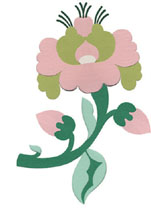
The lagom guide to respecting nature

The Earth’s surface is being disrupted at a rapid rate. Urbanization, excavation, deforestation and landfill are just some of the ways our actions threaten our health and the survival of wildlife. It’s sad to think that our activities are having a harmful effect on the planet and on other living species, even leading to extinction in some cases.
ATTRACTING THE BIRDS AND THE BEES
No, not that kind of ‘birds and the bees’ (we’ve already covered that here). I’m talking about all the creatures, great and small, with whom we share the planet. Put simply, we need them, and with so many species now under threat, it’s vitally important that we try to give them a helping hand. It’s wonderful if you have access to acres of untouched land on your doorstep, but there are also things you can do to help wildlife in your neighbourhood, even in the smallest of outdoor spaces. By helping to preserve the ecosystem, you’re doing your bit to create a haven for insects, hedgehogs, birds and wildflowers.
‘The wildlife and its habitat cannot speak, so we must and we will.’
Theodore Roosevelt
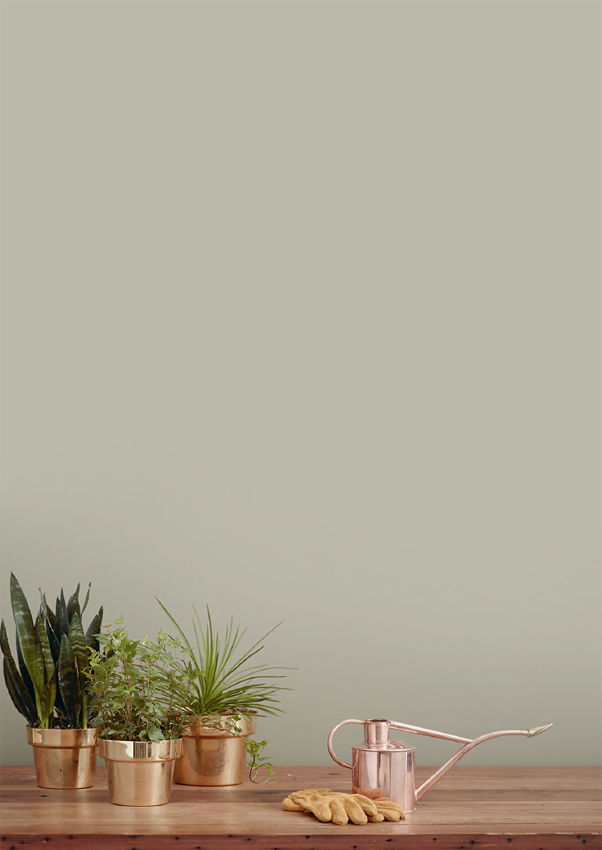
Kaufman Mercantile/Unsplash
At our family summer cottage, my mother-in-law leaves sections of the lawn completely untouched. Used to perfectly manicured lawns, I was somewhat bemused by the ‘overgrown’ look and offered to cut the grass on more than one occasion (which was politely declined). Then I learnt that there’s a very sound principle behind this. Untouched areas provide a place for wildlife to go about their work undisturbed. Long grass, for example, is akin to a mini-jungle, helping to nurture flowers, pollen and seeds, and in turn attracting insects, moths, grasshoppers and larger animals like hedgehogs and birds. Likewise, a discarded pile of logs makes an ideal haven for small critters, and larger animals such as bats, birds and badgers will closely follow.
Your neighbours might think you’ve lost the plot if you allow the entire garden to look like an overgrown jungle, but how about devoting small sections of it to wildlife, as nature intended? After all, meadow flowers look beautiful on a summer’s day, and who doesn’t love a passing hedgehog?
Go native and diverse
You’ll attract more wildlife when you have a diverse range of trees, shrubs and plants in your garden. Stick to native plant species to ensure nothing becomes too dominant and everything thrives.
A pond, birdbath or even a container of water can help attract aquatic creatures like frogs and toads, as well as passing birds and other wildlife, to your outdoor space.
Feed the birds
Give birds a helping hand by leaving out a little food. Opt for a variety of feeders (like plates and nets, or the seed cakes here) to attract more species, and keep the supply well stocked. You might even take up bird watching as a result – and join the scores of Swedish hipsters who wander the woods with a pair of binoculars!
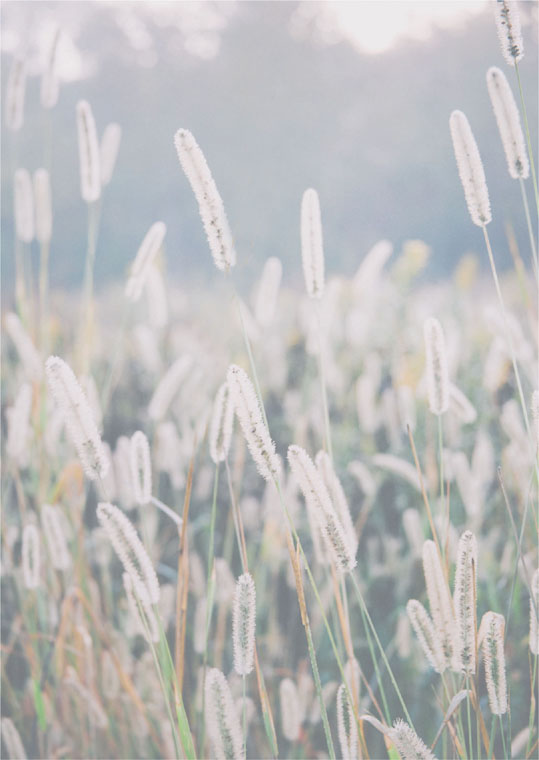
Eli Defaria/Unsplash
A DIY WINTER BIRD FEEDER

Seed cakes are popular with birds in the winter when naturally found bird food is scarce. Create your own using a few basic ingredients and hang them from branches when the temperatures start to drop below freezing. You’ll have a wonderful variety of birds flocking to your garden before you know it!
What you need
+ 200g (⅔ cup) lard
+ 400g (1⅓ cups) (approx.) bird seed
+ a knitting needle or other pointed object
+ a piece of string
What to do
1. Slightly soften the lard by leaving it in a warm place for an hour or so (do not allow it to melt, though).
2. Once softened, cut the lard into small pieces (about the size of walnuts) and place in a bowl or on a clean board. Gradually work in small handfuls of bird seed until it looks compact and the seeds stick together. Though it is quite a messy procedure, it is more easily done by hand.
3. Mould all the lard and seeds together, then shape into roundish cakes (you should be able to make six, approximately) about the size of slightly flattened tennis balls.
4. Leave in the fridge to harden overnight.
5. Remove from the fridge and make a hole in the cake using a knitting needle or other pointed instrument.
6. Thread a piece of string through the hole and hang the seed cake outside from a branch or hook – and watch the birds enjoy their feast!
Birds can become dependent on food supplies, so make sure you stock up regularly!
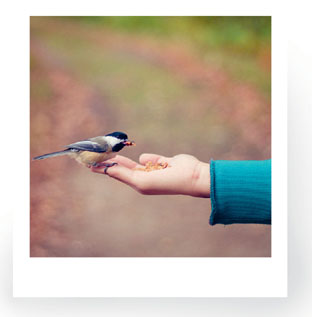
Bonnie Kittle/Unsplash
With urban areas expanding to accommodate the growing population, many insects are losing their homes. The Swedish city of Mölndal has taken great measures to combat the creepy-crawly housing shortage: a vast insect hotel designed to attract and accommodate butterflies, birds, wild bees and a host of other critters.
As much as you love animals, if you live in a home with a small garden, you’ll most likely want to reserve most of your space for a glass of prosecco in the sun! But why not also consider your own small insect hotel? They come in all different shapes and sizes, and are a perfect way to invite creepy-crawlies to join in the fun. They also provide some evening entertainment – you never know who might have moved in!
Help save the bees!
There’s been a rapid decline in the number of bees since the 1990s due to industrial agriculture, parasites and climate change. We should all be concerned about our black-and-yellow friends. According to the Swedish Beekeeping Association, 76 per cent of everything grown in Europe can be attributed to pollination and the hard work of bees. Imagine a world without apples, plums, cherries, peaches and nectarines!
With the advent of pesticide use in the countryside, urban areas have become a bee’s friend. In Stockholm, there are hopes that a ‘bee-friendly zone’ – including a good supply of forage and water from spring to autumn – will help stop the decline. In other cities, such as Malmö, beehives are popping up on the rooftops!
Simple ways to help save the bees
All over the world beekeepers are working to support the dwindling bee population and they need our support. Here are four things you can do today:
+ Buy local honey and support the beekeepers in your area.
+ Stick to honey labelled ‘non-heated’ or ‘non-transformed’.
+ Select organic honey.
+ You can also create a bee-friendly garden by planting some of the species in the next section.

Brad Huchteman/Unsplash
‘When one tugs at a single thing in nature, he finds it attached to the rest of the world.’
John Muir
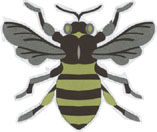
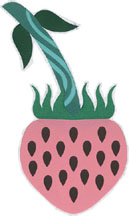
+ Fruits and vegetables
blackberries, cucumbers, pumpkins, strawberries, wild garlic
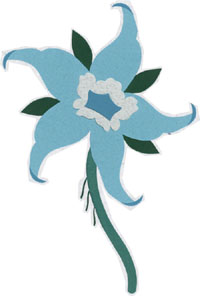
+ Annuals
borage, cleome, clover, marigold, poppy, sunflower
+ Perennials
buttercup, crocus, dahlia, foxglove, geranium, rose, snowdrop
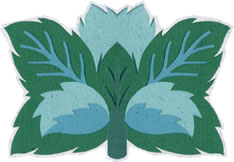
+ Herbs
catnip, coriander, fennel, lavender, mint, sage, thyme
It’s not uncommon to own areas of wooded land in Sweden – after all, forests cover more than 50 per cent of the country (although, of course, according to the law of allemansrätten everyone has right of access to amble and forage). Owning a section of land with many trees comes with a large amount of responsibility, and Swedes take this responsibility seriously.
‘We receive advice on how to protect, manage and nurture the forest to ensure the ecosystem thrives,’ says family friend Yvonne Larsson, who owns 16 acres of forested land. ‘We are conscious that how we look after our land plays a role in climate change.’ As with many environmental issues, there is a continuous tussle between industry and the environment, and the Swedish Society for Nature Conservation (SSNC) is working hard to protect the forests.
If you’re lucky enough to own land with trees, think before you go for the chop. You see, trees are our friends. They supply oxygen, clean the air, protect wildlife and help prevent soil erosion. In warm countries, they can also help to keep your home cool by providing shade. Natural air con? Now that’s not bad!
Keep your community tidy
As we’ve seen earlier (see here), Swedes are incredibly tidy people. Their fervour for orderliness extends to the public domain, too. Put simply, Sweden is pretty immaculate. There are government clean-up services, but this doesn’t diminish the effort people put in to doing their bit. The Swedes take pride in helping to keep public spaces clean, whether it’s leaving meeting rooms exactly as they find them or picnic spaces without a trace of rubbish. ‘In Sweden, we’re very proud of nature and feel a strong connection to it,’ explains my friend Ulrika Sjöström. ‘Leaving somewhere the way you would expect to find it is a mark of respect to others, as it allows them to enjoy the environment in the same way you did.’
It’s well known that rubbish can be incredibly harmful to wildlife and the ecosystem. Rather alarmingly, Swedish environmental educator Ann Nerlund tells me, ‘By 2050 it’s predicted that all sea birds and many fish will contain plastic from rubbish that ends up in the oceans.’ This is part of a wider issue, of course – but by tidying up after ourselves, we can do our bit to ensure that no animals suffer from our visit.
If you’d like to be proactive, look out for forthcoming community events, like park clean-ups, and take family and friends along to pick up litter.
Reduce your packaging waste
Eco-minded Sweden had already introduced payment for grocery-store plastic bags when I arrived way back in 2004. In the intervening years, many countries have followed suit, including the UK in 2015, and it’s now common to see people around the world using reusable shopping bags (which is a great start). Packaging, on the other hand, continues to be a huge problem. In 2015, food packaging and containers accounted for 45 per cent of items going to US landfill.3 With many supermarket products double or triple wrapped, and given that takeaway lattes in disposable cups are such a popular habit, it’s easy to go through a vast amount of packaging.
Simple ways to minimize your packaging waste today
+ Opt for items that are returnable or refillable.
+ Go for bulk buys rather than individually wrapped items.
+ Use your own water bottle instead of plastic ones.
+ Take a travel mug with you to coffee shops to avoid disposable cups.
+ Make your favourite brew from loose-leaf tea rather than teabags.
Recycling
Recycling is nothing new, but it’s certainly important to remind ourselves just how important it is. By sorting and recycling our rubbish, we’re ensuring that as many materials as possible are being reused, reducing the need to extract raw materials and limiting the amount of waste that ends up in landfill and our oceans. In Sweden, there’s a well-implemented recycling system in place, and an incredible 99 per cent of household waste is recycled.
Did you know that in 2010, Swedes recycled 88 per cent of aluminium cans and PET (polyethylene terephthalate) bottles?
Reuse your rubbish
You might even like to tap into your inner creative and give your rubbish a new lease of life – or ask a local school if they need any craft supplies. I’ve noticed that at my children’s school there’s no end to what they can make from cardboard tubes, milk cartons and aluminium foil (although it can be a job fitting everything they’ve made on your bike at the end of term!).
Thrifty tip
My children frequently enjoy gardening at their Swedish school. The bottom third of a cardboard milk carton makes a surprisingly good pot for growing bell peppers, tomatoes and other plants. A simple yet very thrifty way to recycle and reuse!